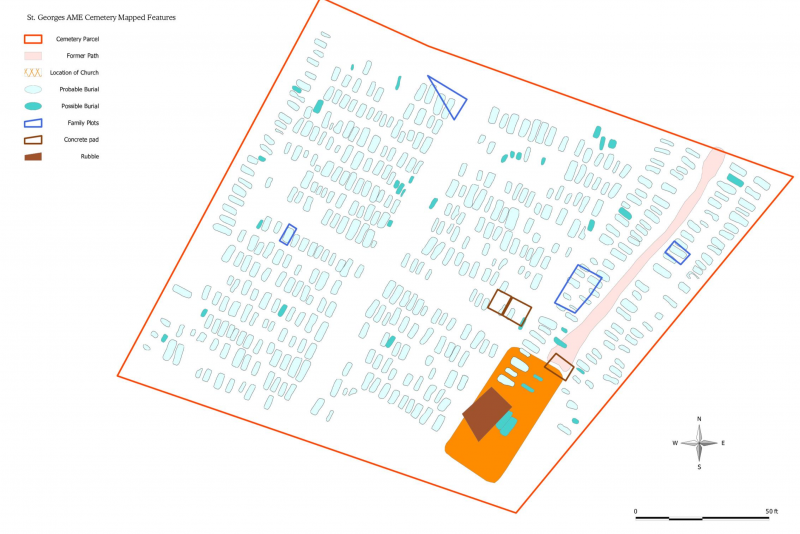A recent research project has discovered that as many as 550 members of Lewes’ African American community may be interred at the St. George AME Church cemetery along Pilottown Road. With limited historical records, the number had previously been estimated at fewer than 100.
It is believed burials range from as early as 1848 until 1945, when the cemetery was closed.
“All of this data makes the AME cemetery one of the most significant and important remaining African American historical sites in Lewes, and well worthy of further study and attention,” said Trina Brown Hicks, a Lewes African American Heritage Commission member who introduced a presentation on the findings at the Greater Lewes Foundation’s annual meeting, held Sept. 11 at the Lewes library.
Aided by donations from Dawnel White and Pam Brown, the Greater Lewes Foundation led the effort to learn more about the prominent cemetery, hiring Edward Otter Inc. and Horsley Archaeological Prospection LLC to survey the property and employ ground-penetrating radar.
As noted in the report prepared by Otter, ground-penetrating radar is not 100 percent accurate; however, the sandy soils and lack of rock on the site are ideal for data collection. Scans were made at 10-inch intervals across the entire cemetery. Within the 0.61-acre parcel, 453 probable burials were noted along with 35 possible graves. Additional burials are suspected to be located under bushes and trees that cannot be penetrated by the radar.
The site, as it looks today, has dozens of small, square stone markers; a few traditional headstones also exist. Most of the stone markers are numbered, but many are now illegible. The records that went along with the markers are believed to be lost.
Work to uncover more information and tell the stories of those buried in the cemetery is the next step, likely to be undertaken by the Lewes Historical Society and the African American heritage commission.
The cemetery is separated into two distinct sections. The western side has four quadrants divided by intersecting walkways. Each quadrant has eight rows of graves, with one having just seven. Additional graves line the boundary of the property.
“This is really laid out as tightly as possible, though in a planned design,” said Mark Chura, Greater Lewes Foundation project director.
In the eastern section, the radar found two rows on each side of a walking path that leads to what is suspected to be the former site of a church.
“Although it’s not fully documented, there’s a sense that that’s where the church was,” Chura said. “The footprint that is suggested based on research is to be about 24 by 48.”
Brown Hicks said the cemetery served three historic black churches in Lewes. Melson Funeral Home officiated many of the burials after 1934, when it was established, she said.
“Over time, records have been lost as to how many persons were buried in the cemetery or what the cemetery looked like,” she said.
Although the latest project has uncovered new information about the cemetery, much is still to be learned.
“There are a lot of people there, so there are a lot of stories, and there’s a lot of history,” Chura said. “This project just reinforces the significance of this site.”






















































